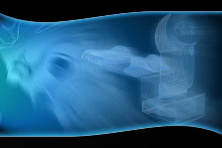Bespoke Foot Orthortics
Orthotic materials are researched using force plates, for both support and shock absorption, depending on individual cases. Materials e.g. for sports (used by runners, cricket, rugby, footballers and national athletes) provide excellent shock absorbency and support. Firmer orthotic materials are used to give support but take up less space within shoes, where the foot is wide, less space, or where shoes are slim or shallow, where a slimline orthotic is used.For different activities, just walking, sports, differing densities of materials are used to suit differing conditions & lifestyles.
For children, specific orthotic materials are used to provide comfort in activities, with amounts of support to keep the feet straight and will prevent inrolling in both school and training shoes.
I manufacture many materials specific to each persons needs, ranging from very soft and shock absorbing, to carbon fibre orthotics, which are thinner and lighter and stronger than other materials. Specific materials are used for specific conditions.

Andrew Root - Biomechanical Podiatry
All orthotics are bespoke to each shape of each individual foot. There are quite high numbers of people who have differences between left and right feet and taking a plaster mould/scan is essential. Where preformed orthotics or off the shelf orthotics will not be of help.
CARBON FIBRE ORTHOTICS
Carbon fibre orthotic properties. The properties of carbon fibre orthotics enable orthotics made of this material to be thinner, lighter, stronger than other materials. The orthotics made using carbon fibre impregnated with an epoxy resin or carbon fibre laminated with a thermoplastic. Due to the inflexibility and hardness however carbon fibre is not recommended for many and not for sporting activities where heel strike shock adsorbancy is important.
Carbon fibre is not recommended where shock absorption is required (see different densities of thermoplastic). Carbon fibre foot orthotics can be made from a plaster cast of a foot and pressed over the mould, or from a 3D scan then milled from the three-dimensional scan.
KEVLAR ORTHOTICS
Orthotics made of kevlar are made from a carbon fibre derivative which is a mix of carbon fibre and fibres of nomix. Fibres of nomix mixed into the carbon fibre produce differing degrees of flexibility into kevlar orthotics. Kevlar orthotics are thin light and durable. Kevlar orthotics can be used for some sports (see different densities of thermoplastic).FIBRE GLASS ORTHOTICS
The properties of fibreglass orthotics make orthotics to be light, strong and durable. Due to the hardness of the material they are rarely used for sporting activities and tend to be used where there is a limited space such as within evening shoe/walking shoe. Fibre glass orthotics may be made from plaster casts of the feet or made from three-dimensional scans of feet.
THERMOPLASTIC ORTHOTICS
The properties of thermoplastic orthotics. Thermoplastic orthotics allow for different amounts of shock absorption as required. A lower density of thermoplastic orthotics will allow good shock absorption and cushioning and will reduce the heel strike shock.Thermoplastic orthotics for this reason are used particularly for sports and will reduce the forces of running and walking on concrete and tarmac.
Thermoplastic orthotics made of a higher density give more support and control of angle from the orthotic and are again used widely for sporting activities. Thermoplastic orthotics are ideal for training and gym used within training shoes and are also used within walking shoes for cushioning.